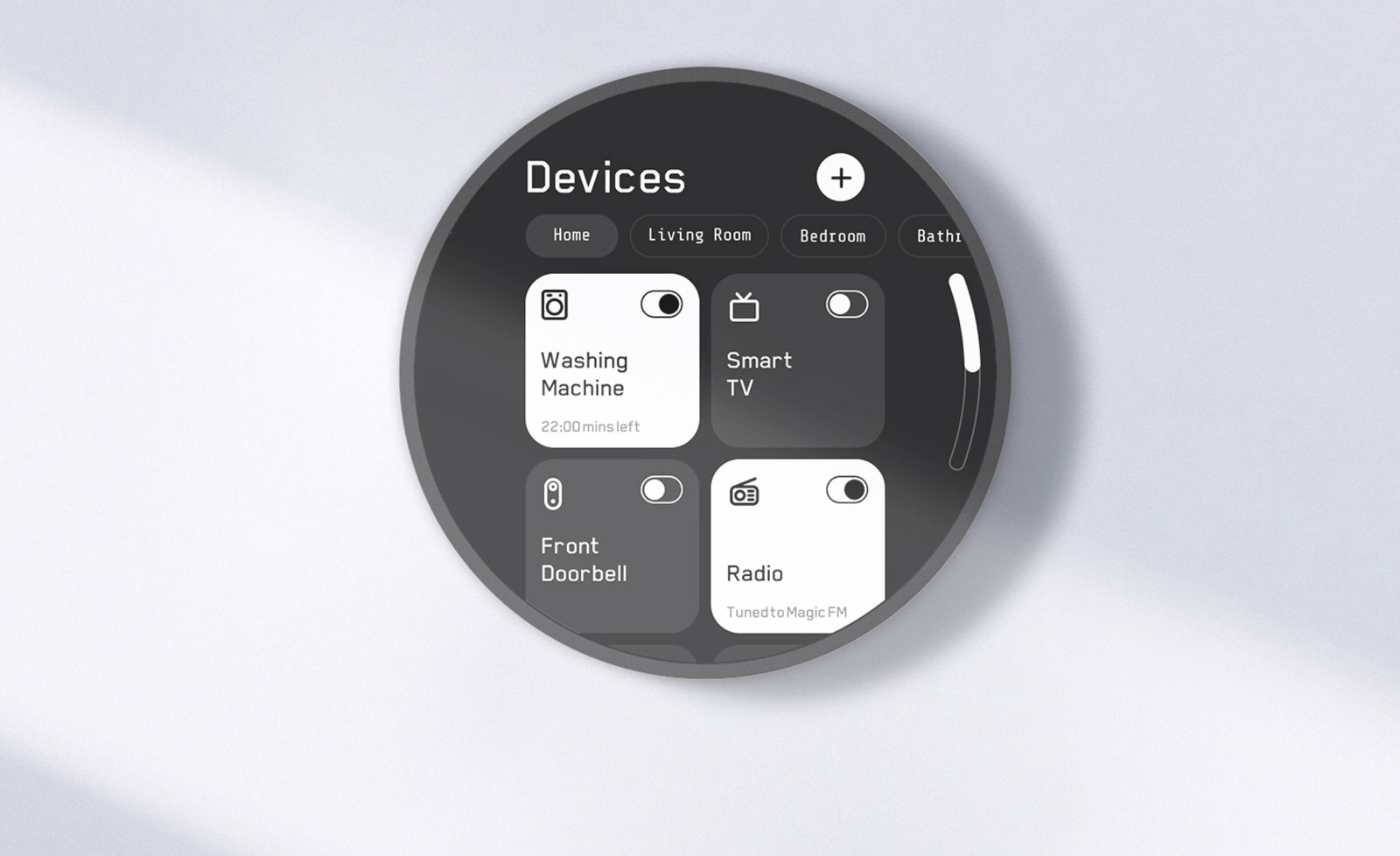
This was a personal project looking into smart home interaction and management. The idea was to create a low powered device that would enable users to control and view their smart devices in a logical and intuitive manner. The main design criteria was developing an interface that didn’t distract, instead blending into the environment while still giving the user the control they need.
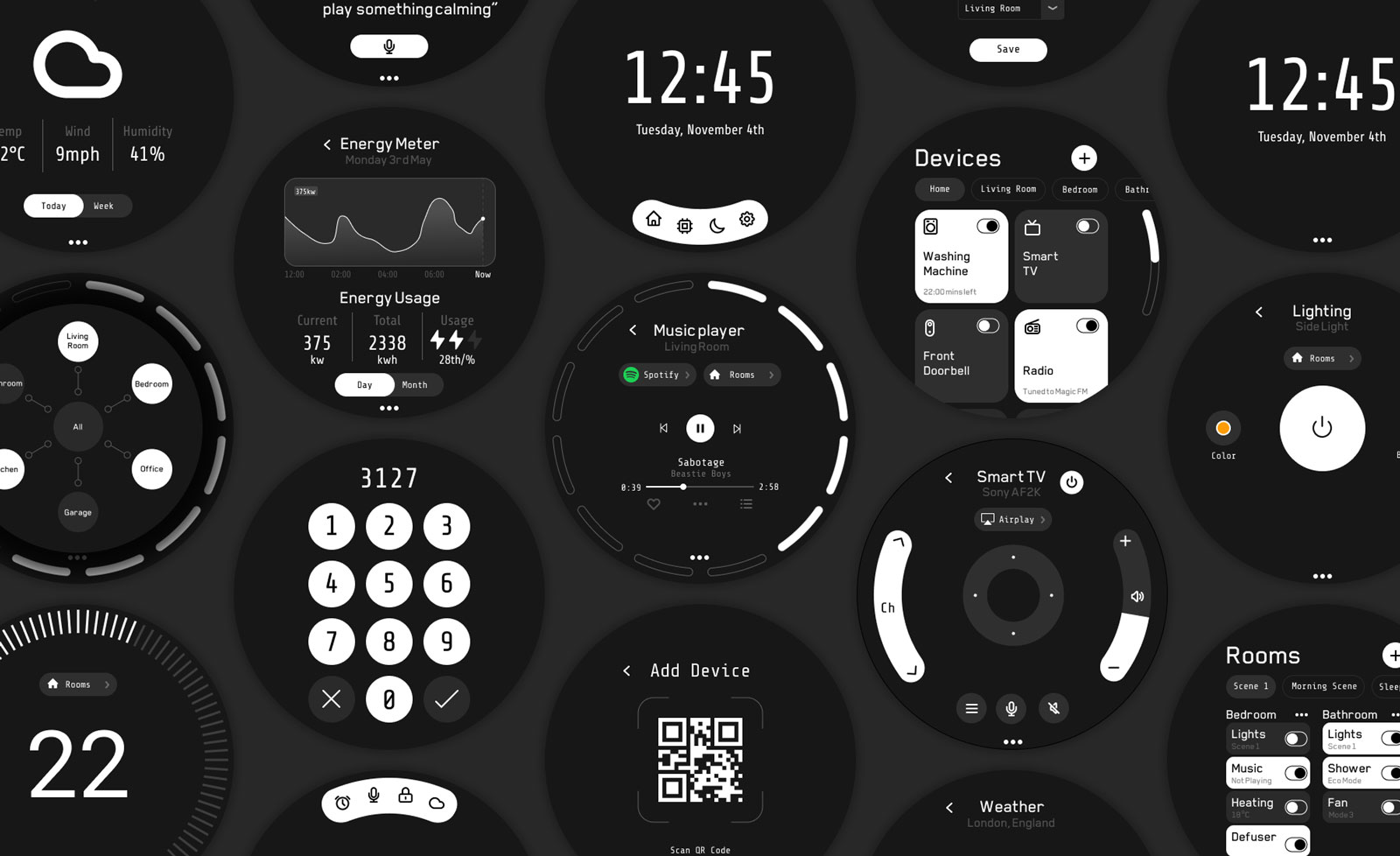
The device is designed to control all areas of the users smart home. Above is a breakdown of some of the control screens. The design language was intended not to not draw the users attention. Colour & images were therefore used sparingly, keeping inline with the distraction free aesthetic.
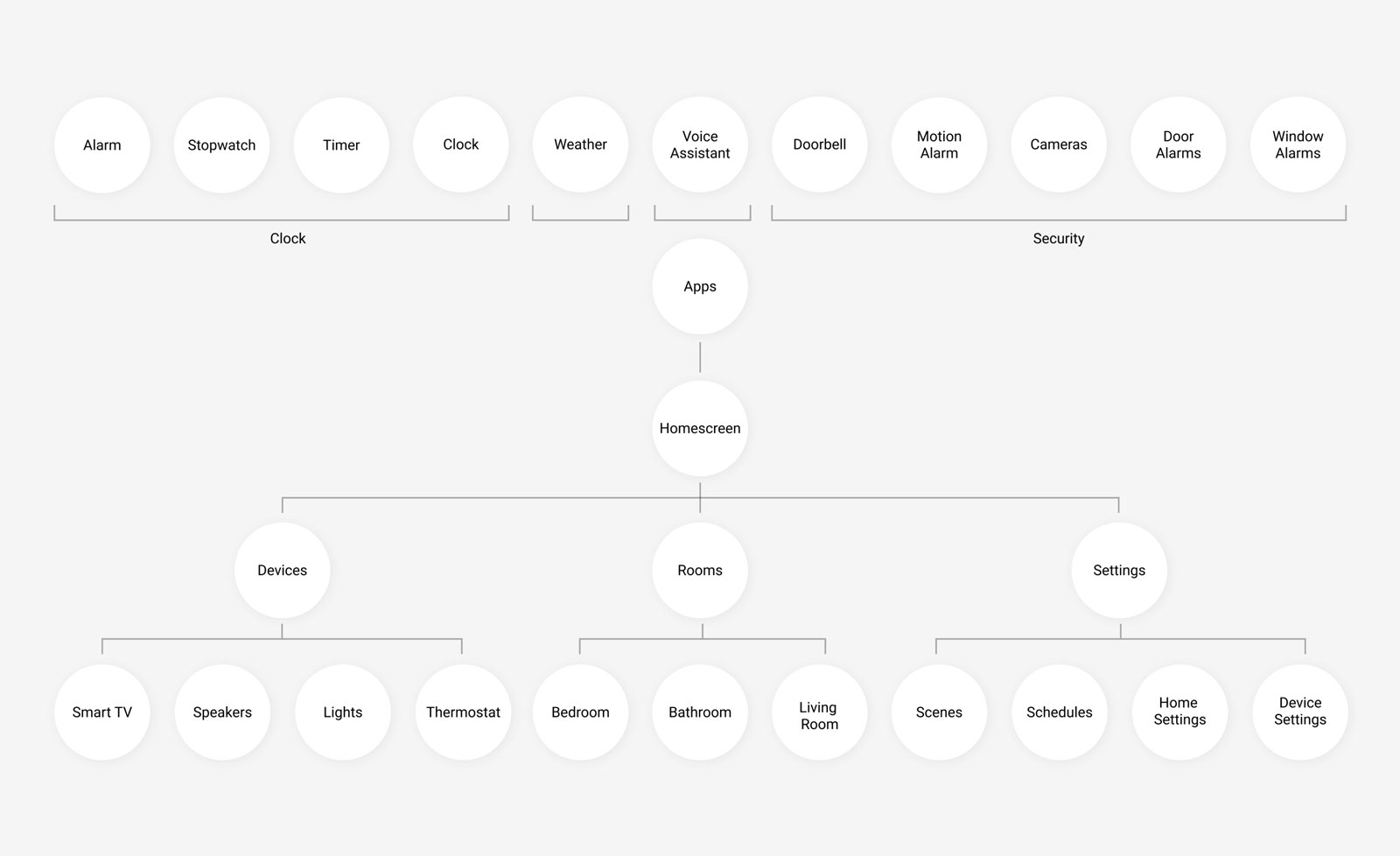
Here is a map showing the architecture of the system. As shown the homescreen is the root of the system. The particular home screen is customizable but the default would be an analog clock. The structure is then split into two parts, apps and rooms. This gives the user the option to control their home via two different methods. By using the App method they would select the app first e.g. music player and then selecting the room that they wish to play music in. In the other method they select the room first and and then select the function they would like to change e.g. music, lighting or temperature.
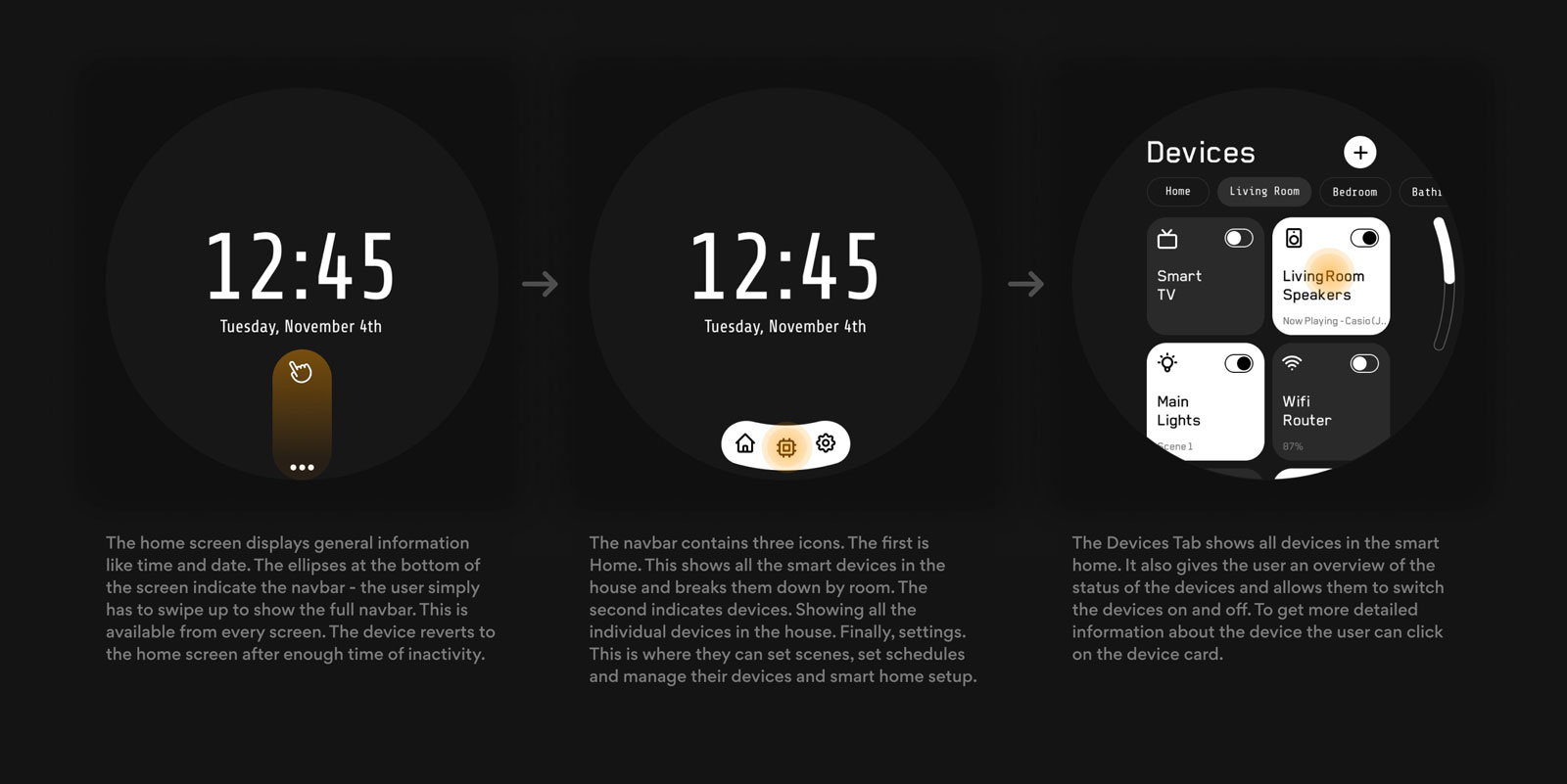
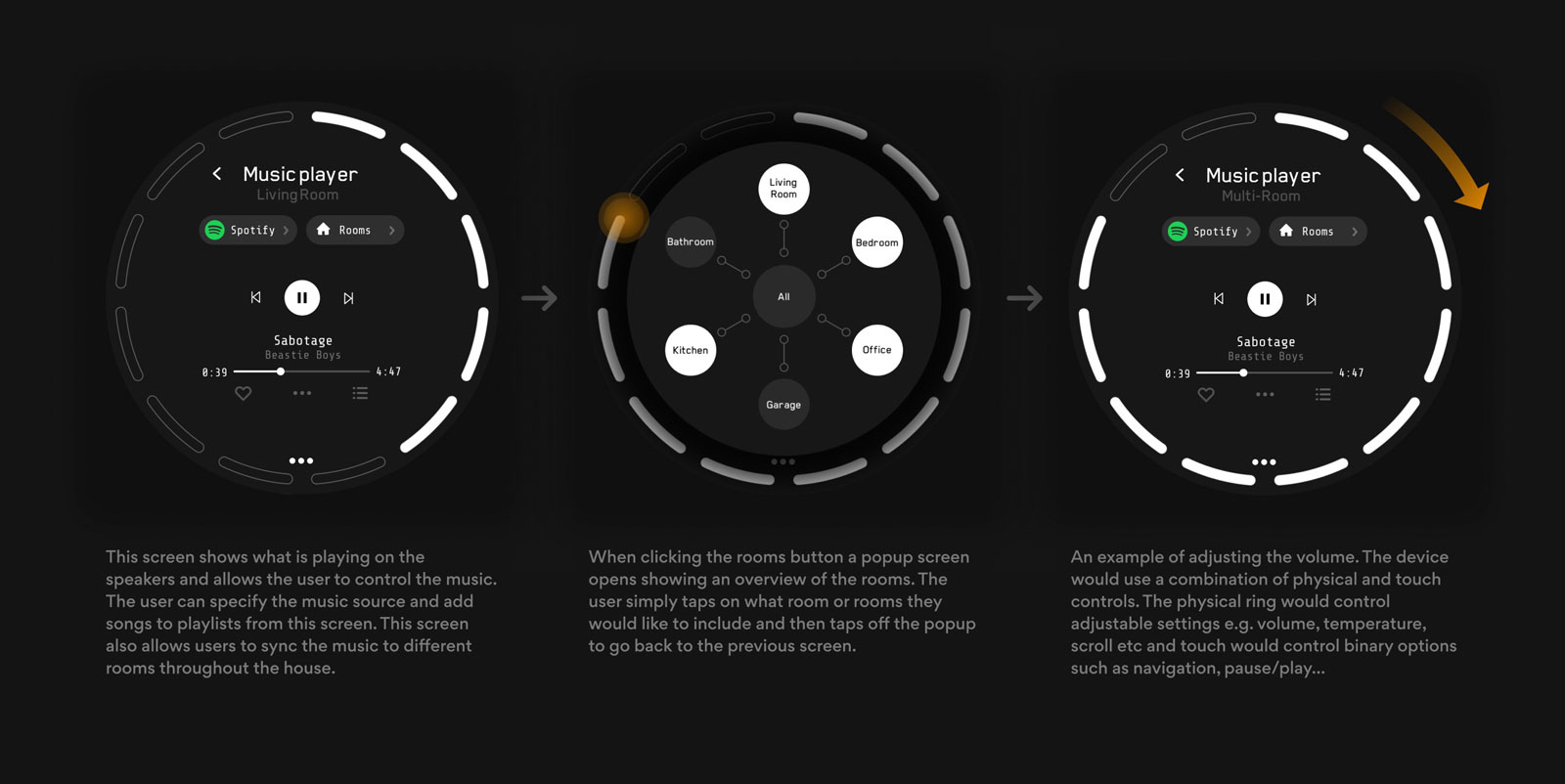
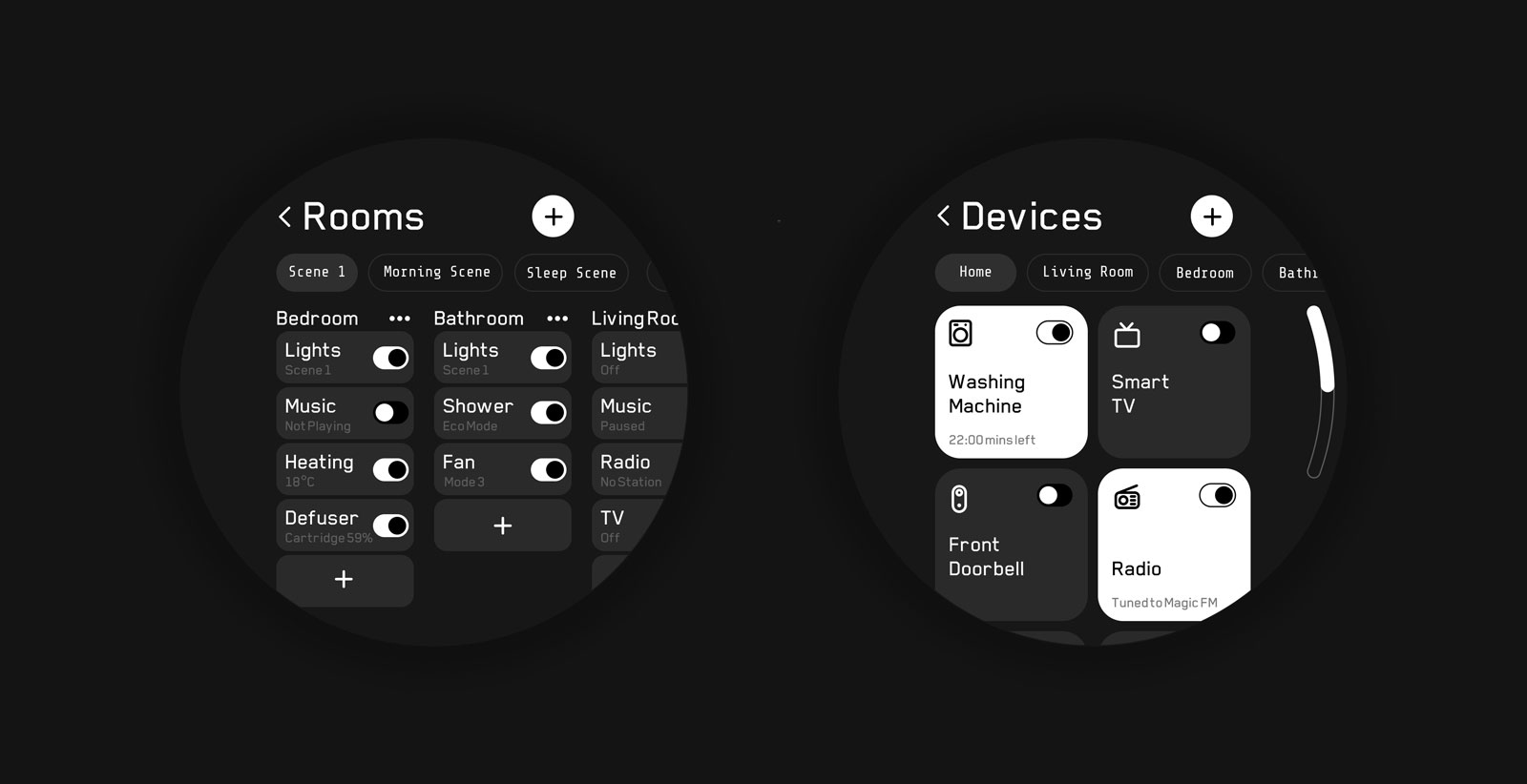
Left: The room screen lists all the devices in their respective rooms. It allows the user to get an overview of the devices their smart house and their status. It also enables users to set their scenes (Which actives multiple devices to reflect an atmosphere the users is looking to create, for example, warm lighting in the evening and perhaps playing calming music to prepare the user to sleep).
Right: The devices screen is also an overview of the users smart home but instead of by room it is broken down by device. It allows the users as an example to see what devices are currently switched on and it has a card that represents the devices status. The user also has some control of the devices from this screen for example, pausing music and skipping songs.
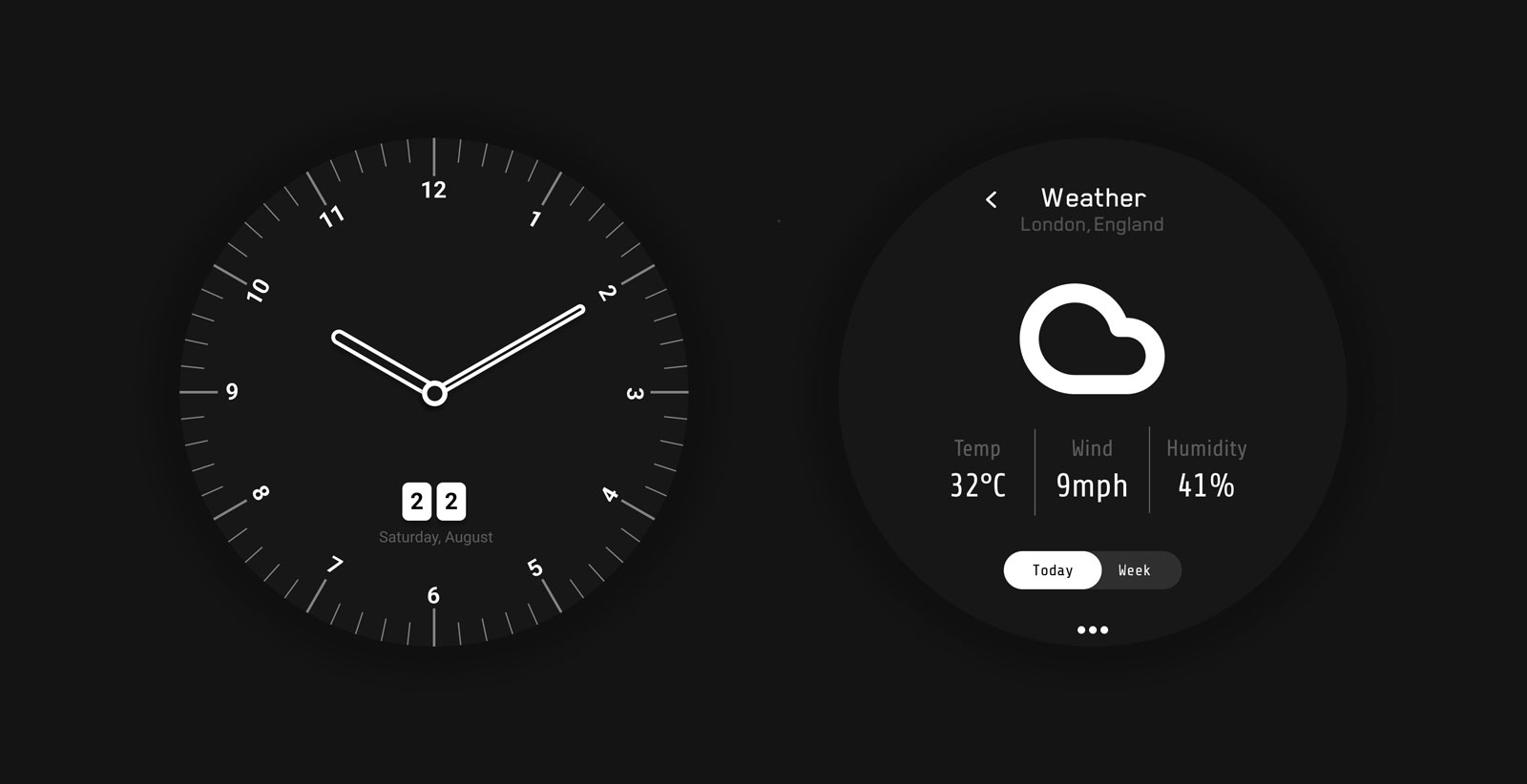
The user could choose the default Home Screen. This would be the root screen that the device’s system architecture would centre around. In addition to this, the screen could be locked. This would be useful in security applications e.g. if the device were being used as a Lock Screen for the user's doorway.
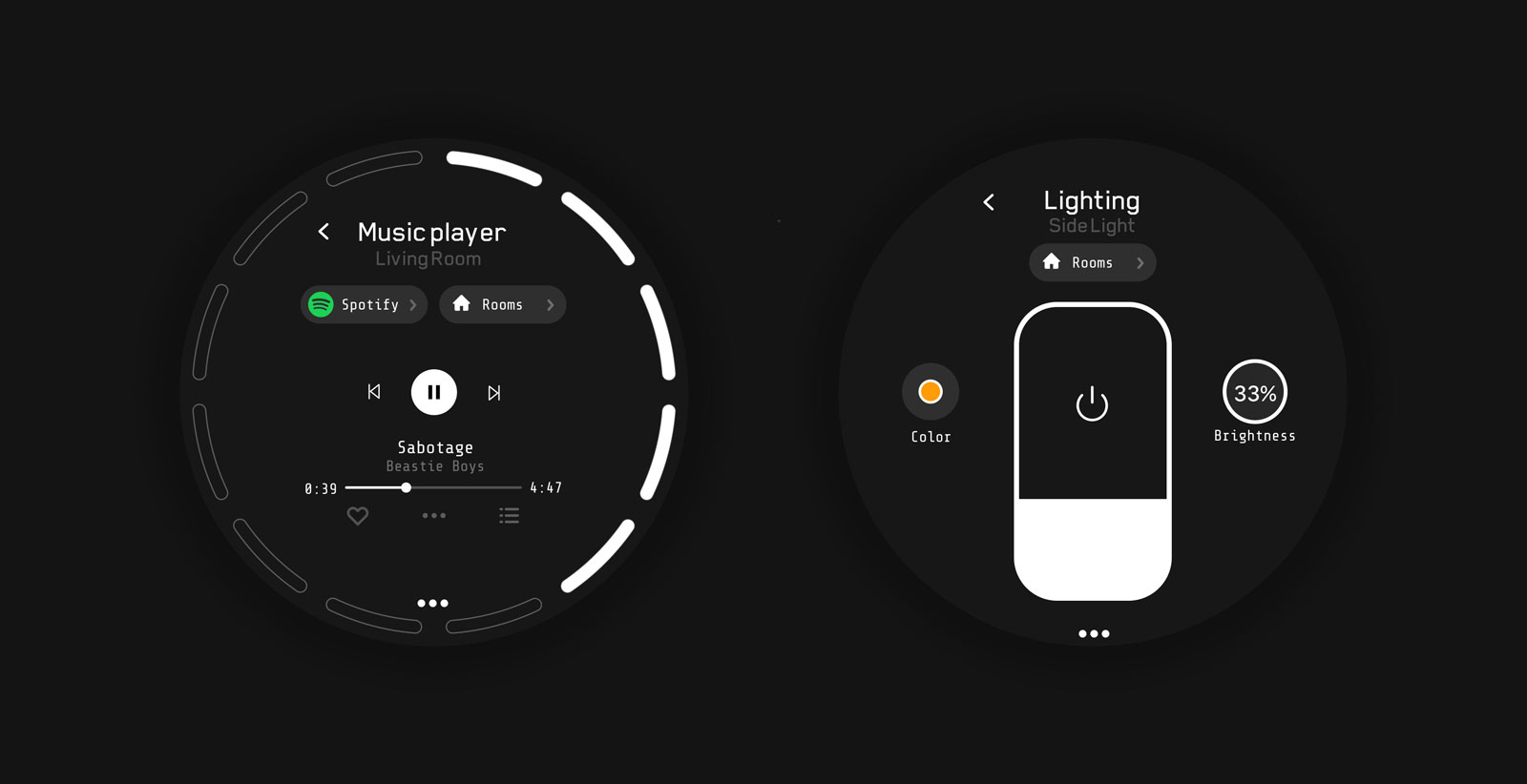
Left: The Media player screen controls auto throughout the home. The experience would be heavily tied into the user's music streaming provider so that they could like songs or add them to playlists. The user is also able to change the type of audio for example from music, audiobooks, podcasts etc.
Right: This is an example of the user changing the brightness on a smart light.
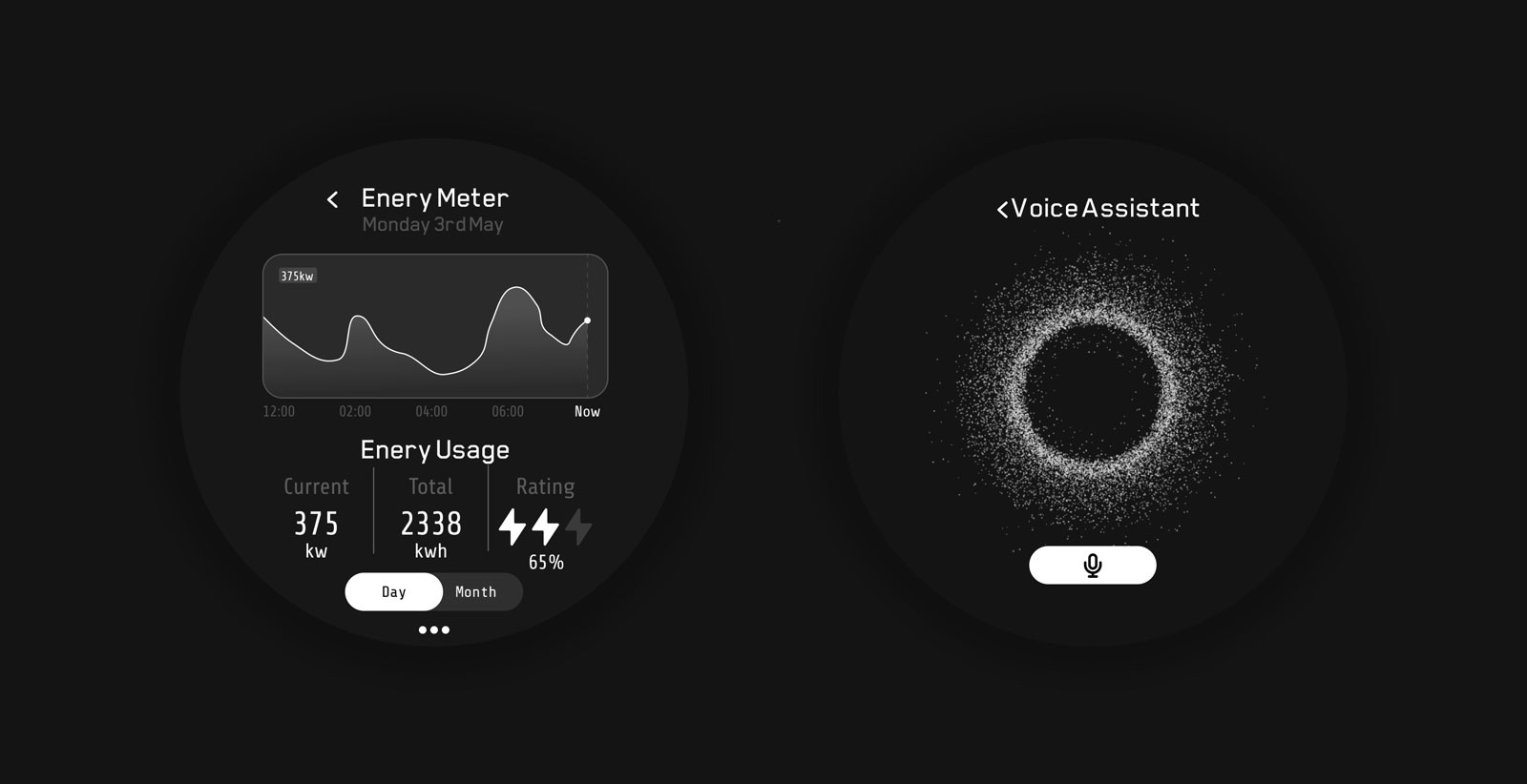
Left: The device would place emphasis on creating a more sustainable household. This would be mainly done in two ways, first, by making the user more aware of their energy usage they can better understand their consumption and make active steps towards reducing their output. Second, by learning users' habits over time the device can optimise their energy usage, for example turning the heating on just before the user is likely to wake up or switching lights off in rooms where no people are detected.
Right: The Device could also be operated by using voice commands, activated by saying the chosen wake word.
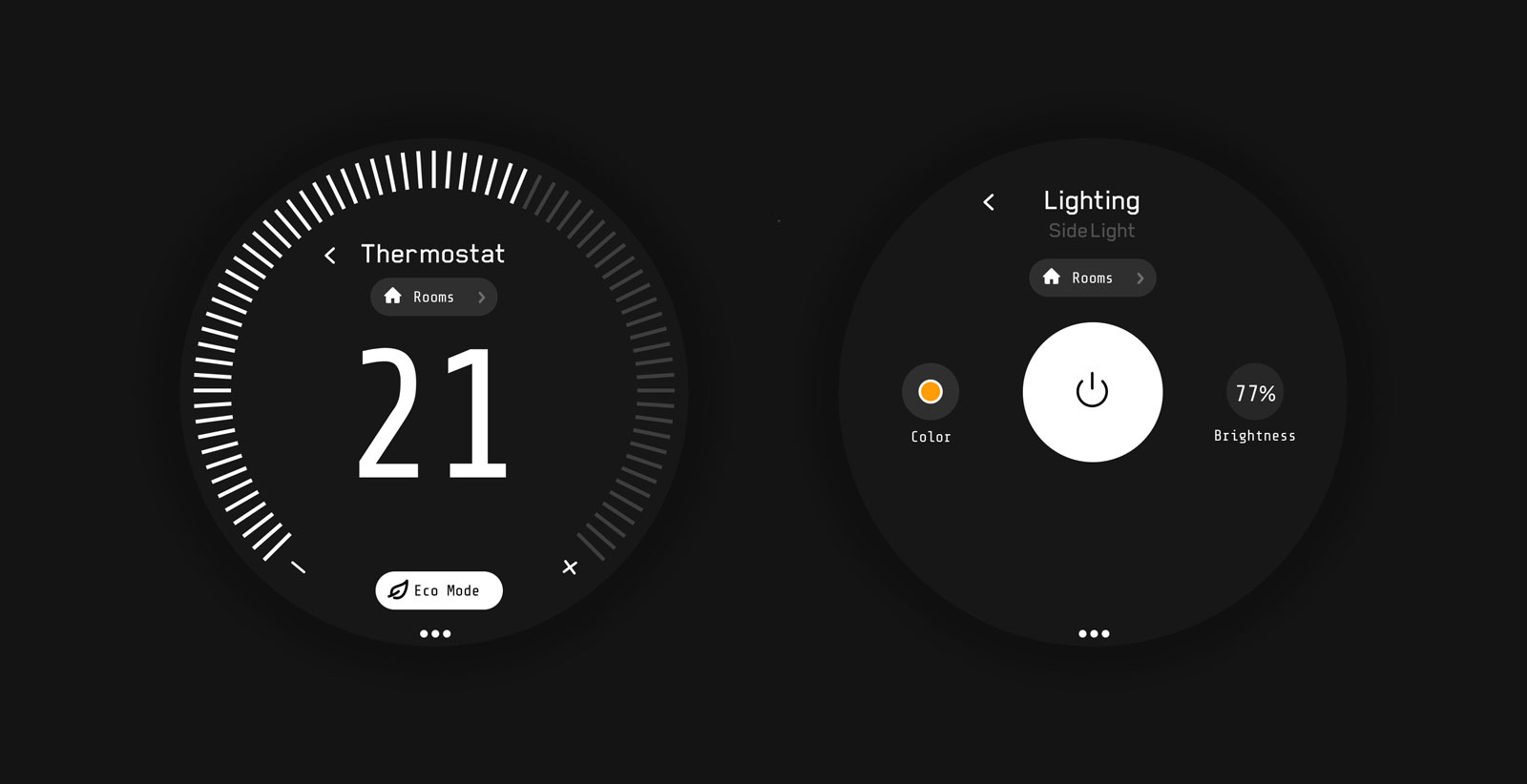
Left: The Smart Thermostat is an intelligent system that allows users to control the temperature across their house. The system can learn about the user's habits and routines, make suggestions and improve heating efficiency. The user can set the heating mode, routines and analyse their heating and energy usage over time.
Right: This is an example smart light control screen. The user could control brightness and colour as well as create scenes and set routines.
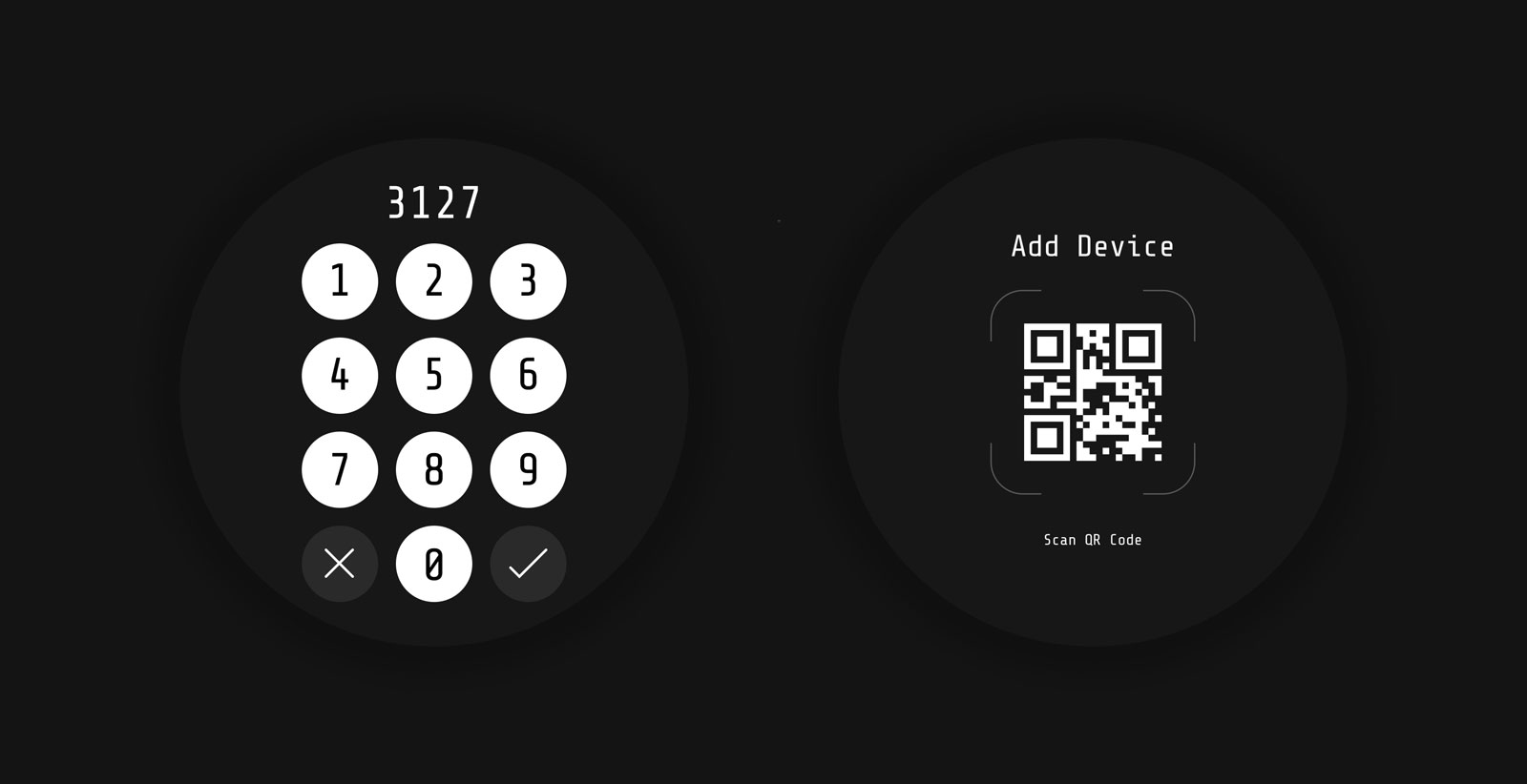
This is a security screen for use in doorways and entrances in the user's home. It would work in conjunction with electronic door locks etc.
Right: To add users and their devices onto the system they would simply have to scan this barcode taking them to the new user setup process.
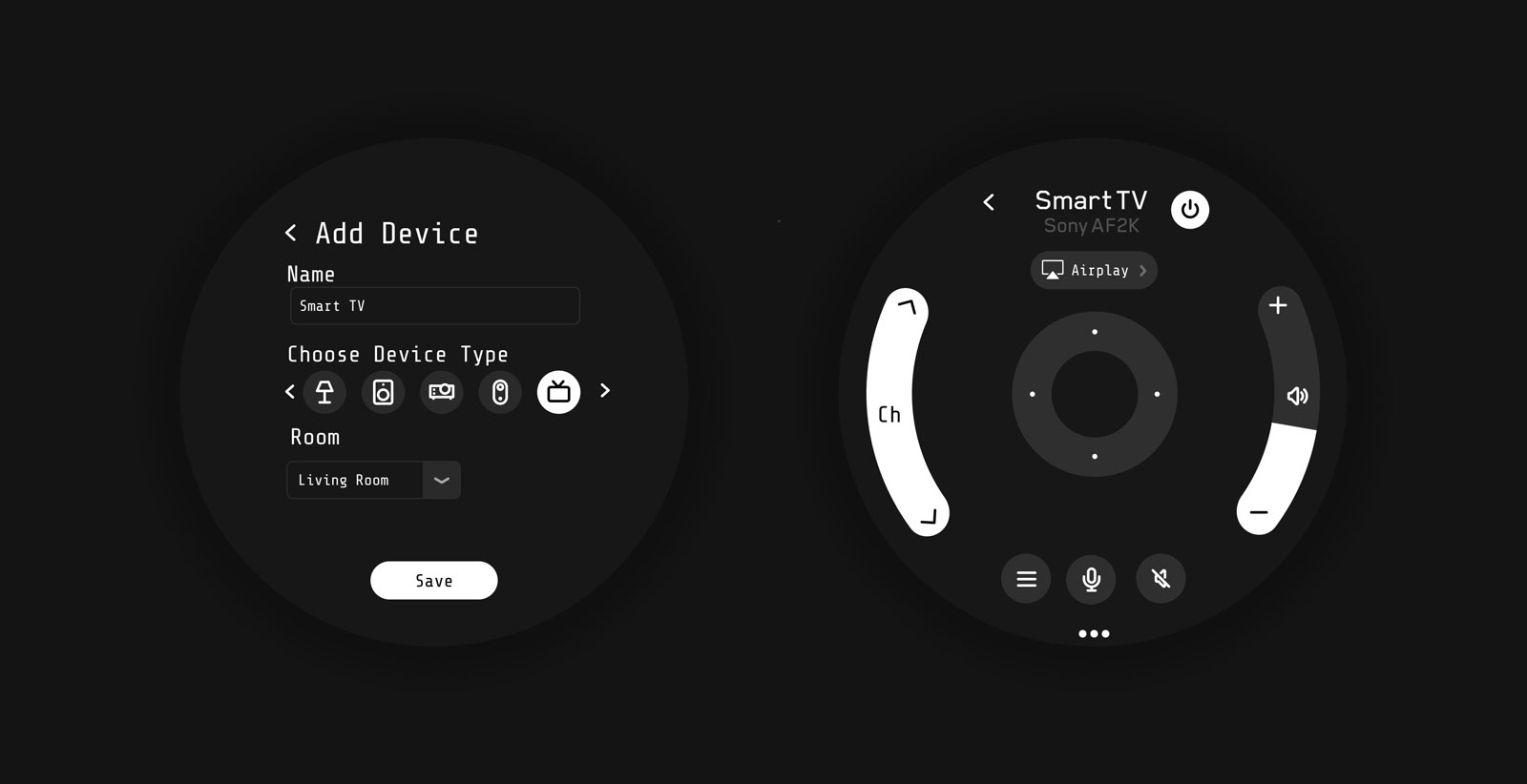
When adding a new device to the system, the user selects what they would like the device to be called, what part of the house the device will be located in and the type of device. When the user selects the device type from a pre-selection of device interfaces, from Lighting to TV Remotes.